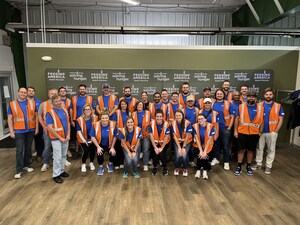
MILWAUKEE, Nov. 10, 2025 /PRNewswire/ -- According to new analysis from Wipfli, automotive tooling expenditures are expected to climb in 2026 to $5.6 billion, up from an estimated $4.3 billion in 2025. The increase in tooling spend is a result of all-new truck launches from Ford, General Motors and Stellantis.
While the near-term outlook shows some positive momentum, the long-term trajectory suggests the automotive tooling industry has plateaued. Wipfli forecasts that through 2035, tooling spend will peak at approximately $6.2 billion, indicating that the industry is unlikely to return to the high levels seen in the mid-2010s.
"The North American automotive industry is facing many challenges, including cost pressures, tariff and trade uncertainty, supply chain fragility, labor issues and vehicle affordability," said Laurie Harbour, partner at Wipfli. "All these pressures are forcing the automakers to make decisions to drive costs out of vehicle development with fewer trim levels and reduced complexity, which reduces the number of tools required across the industry."
In 2020, the automakers' product development focus shifted from ICE to BEV, which resulted in a drop in vehicle launches. Ongoing adjustments in the automotive landscape, including fluctuating EV demand and broader economic uncertainty, forced the industry to shift new EV products back and delay production. Today, an estimated $3.4 billion in BEV-related tool spend has been removed from automaker plans, with an additional $1.3 billion delayed into 2026 and beyond, further contributing to volatility in the tooling sector.
"We predict that automakers will continue to be faced with difficult strategy decisions about product mix and manufacturing strategies," Harbour added. "We expect vehicle launch timing will continue to adjust and vehicles will be added and removed."
In Wipfli's most recent manufacturing pulse study, conducted in August, 40% of manufacturers indicated they are optimistic about the future, which is slightly higher than the same time last year. The industry's top concerns are the higher cost of doing business, raw material tariffs and continued inflation. The tooling industry is currently sitting at 66% utilization and forecasted to end the year at 71%.
"The manufacturing industry is facing headwinds. This is a time for tooling and production suppliers to focus on adaptability and efficiency," Harbour added. "Those who understand where opportunities lie — and align their sales and operations to capture them — will be the ones to thrive through the next cycle."
Wipfli's automotive tooling forecast provides insights into automotive OEM sourcing activity, program shifts and the implications for suppliers across North America. The data, drawn from Wipfli analysis and AutoForecast Solutions (AFS), serves as a key indicator for mold builders, die makers and automation suppliers preparing for the industry's next wave of demand.
For more information about Wipfli's manufacturing industry insights and forecasts, visit wipfli.com/manufacturing.
About Wipfli:
Wipfli is a leading national advisory and accounting firm with nearly 100 years of serving ambitious middle-market organizations. We understand our clients' unique challenges and help them succeed on their terms through assurance, tax, advisory, outsourcing and technology services. With 3,000+ associates and global alliances, we combine national capabilities with local relationships. Wipfli operates under an alternative practice structure: Wipfli LLP, a licensed CPA firm, provides attest services, while Wipfli Advisory LLC, a non-CPA firm, delivers business advisory and non-attest services. Learn more at wipfli.com or contact Alicia O'Connell at [email protected].
Media contact
Alicia O'Connell
[email protected]
SOURCE Wipfli







Share this article